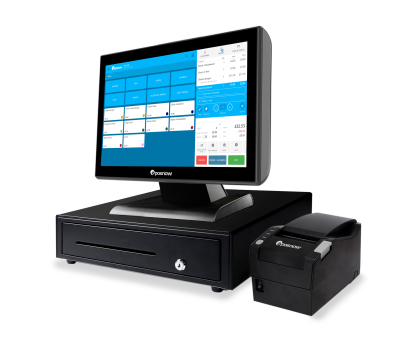Securing Your Food Supply Chain Against Disruption
As anyone in the restaurant industry knows, it takes a mindboggling amount of coordination between farmers, suppliers, middlemen, and restaurants to get food on customers’ plates. Supply chains, and those that supply food in particular, are integral parts of modern life.
While it’s unusual for a supply chain to fail completely, the extraordinary circumstances of the last few years have put an unprecedented strain on the global food supply. Prices have increased, coordination has become more complex than ever, and many hospitality businesses have been feeling the squeeze.
As a business owner, keeping up with your day-to-day tasks can be difficult enough without having to worry about your food supply. In this blog, we’ll be taking an in-depth look at supply chain disruption and what you can do to safeguard your business against it.
What is the food supply chain?
In short, the food supply chain encompasses all the stages that food products go through as they are transported from their source of origin to consumers’ plates. As the world has become more and more interconnected, these supply chains have become larger and more fragmented.
For an example of this fragmentation, we need only look at the distance food travels before it reaches a hungry mouth. 150 years ago, consumers may have only had access to food sources within a 100-mile radius. Any further and the food would spoil. Nowadays, consumers enjoy food sourced from all around the world, passing through potentially hundreds of brokers.
It goes without saying that this fragmentation has pros and cons. While restauranteurs and consumers have access to a wider range of food, the supply chains themselves have become much more difficult to manage.
Gain all the advantages of a POS system with detailed, flexible, downloadable reports, and so much more:
- Manage and update products quickly with easy-to-use software
- Expand your business into multiple channels and integrate with a variety of online platforms
- Manage multiple locations and salespoints with multi-site management
- Keep queues short with streamlined, modifiable sales processes
- Choose a setup that suits you with software and hardware options

How to mitigate food supply disruption
The interconnectedness of the modern world makes it difficult to avoid food supply disruption completely. However, as a business owner, there are ways to mitigate the effect they have on your business. We’ve compiled some helpful supply chain tips below.
Use analytics to tailor your offerings
No one can predict the future, but thanks to the miracle of modern analytics, you can predict trends. Your Epos Now Complete Solution, for example, can help you collect sales data and compile it into invaluable business reports.
As you conduct business, your electronic point of sale (EPOS or POS) system collects sales data with every transaction. By examining this data, you can see what your most and least popular dishes are. With this information, you can tailor your menu to the wants of your diners while also cutting down on the ingredients you’ll need from your supply chain brokers.
Keep your menu open
When dealing with an unpredictable food supply chain, flexibility is the name of the game. If you’re struggling to keep supplied with the ingredients you need for your current menu, it’s time to switch it up and focus on dishes based on ingredients you can actually get.
This isn’t to say you can’t have some customer-favourite mainstays on your menu. It only means that you’ll need to work closely with your chefs to ensure you can produce the favourites. This might as simple as switching out one rarer herb for a more accessible one or working on a simpler recipe.
Adapt to food costs
It’s safe to say that the last couple of years has been a learning experience for all of us. One of the symptoms of this instability has been rising inflation rates around the world. This means that prices for ingredients have been going up while diners potentially have less money to spend on eating out.
To help with food cost inflation, you’ll need to make some tough decisions about your menu. Slimming down the menu may seem like a step backwards, but it can actually be an opportunity for you and your chefs to take a fresh look at what you offer. The analytic features we’ve mentioned above can help you see what should be cut from the menu.
Embrace local produce
“Farm to table” has been a buzzword in the restaurant industry for years now. With international food chains being less than reliable, farm to table cooking can be a great way to ensure your restaurant still serves incredible food.
Building a relationship with local food producers takes time and care but has major upsides. Not only will you be putting money back into your local economy, it’s often cheaper to source ingredients directly from farms. This has the added benefit of no longer having to deal with a hundred and one middlemen.
Take some time to find local farmers and food producers around your business and see what they have to offer. You’ll be able to source fresher food and reassurance diners that their food hasn’t spent the best part of a week in a processing plant. Buying local is also seen as a virtuous act so it works hurt to spread the word with your social media marketing.
Manage your supply chain with powerful POS
In your fight against supply chain disruption, a top-of-the-line Epos Now hospitality system. With this system, you can edit your menu on the fly, integrate popular delivery platforms, and manage your inventory in minutes.
If you’re interested in finding out more about Epos Now, get in touch with our expert team below.
